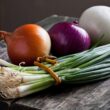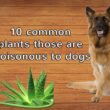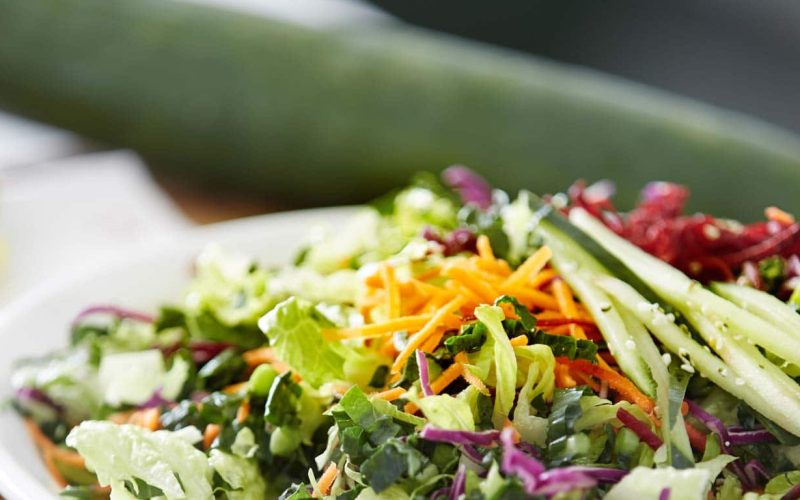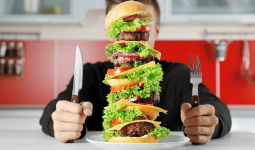Acid reflux diet is specifically designed to help with acid reflux. Acid reflux happens when acid makes a backflow to the esophagus from the stomach.
This is very common, but can also show troublesome signs or physical complications such as heartburn. Acid reflux may occur when the lower esophagus sphincter (LES) gets damaged or is weakened.
Generally, the LES closes up to stop food in the stomach from going up the esophagus. The amount of acid produced in the stomach is determined by the type of food you eat, and the effect it has.
Acid reflux diet provides you with the right type of food to help control gastroesophageal reflux disease (GERD) which is a chronic form of acid reflux.
Foods in acid reflux diet that are used in minimizing symptoms of acid reflux;
Vegetables
Naturally, vegetables are low in sugar and fat. They also help to reduce acid in the stomach. Vegetables like broccoli, cauliflower, asparagus, green beans, potatoes, cucumber, and leafy greens are good options to include in your acid reflux diet.
Oatmeal
Oatmeal as breakfast is a whole grain, and a good source of fiber. You can include oatmeal to your acid reflux diet to help you absorb stomach acid, hence reducing symptoms of reflux. Whole-grain rice and whole-grain bread are also excellent fiber options.
Ginger
Ginger has anti-inflammatory properties that can be used to treat heartburn as well as other gastrointestinal issues. You can easily add it to your foods or you can simply drink it as tea.
Fruits (non-citrus)
Non-citrus fruits, including bananas, melons, pears, and apples, are less likely to provoke reflux symptoms the way acidic fruits would.
Seafood and lean meats
Seafood and lean meats like turkey, chicken, and fish are naturally low-fat foods that are capable of reducing symptoms of acid reflux.
You can add them to your acid reflux diet by either grilling, baking, boiling, broiling or poaching them.
Healthy fats
Foods with healthy fats like walnuts, avocado, olive oil, flaxseed, sunflower oil, and sesame oil are perfect choice in reducing trans fats and saturated fats.
Egg whites
You are on the right track if you decide to add egg whites to you acid reflux diet. Avoid eating egg yolks, especially since they are high in fat and can trigger symptoms of acid reflux.
Acid reflux symptoms may result from stomach acid to reach the esophagus,and causing irritation and pain. If you have too much acid, you can incorporate these specific foods into your diet to manage acid reflux symptoms.
It is important to note that none of these foods below will cure acid reflux, and the decision to use foods listed to get better should be based on personal experiences with them.
Recognizing your what triggers acid reflux in you;
It is highly possible to experience heartburn as it is a common sign of GERD and acid reflux. You may also experience a burning sensation in the stomach after eating some certain foods.
Due to the flow of acid from the stomach to the esophagus, GERD can cause regurgitation or vomiting. Other symptoms you may experience include;
- Hard or lump feeling in throat
- Hard time swallowing food
People experiencing GERD may find that certain foods can provoke their symptoms. It is very unlikely that a single diet can improve all GERD symptoms, maybe because the food we eat triggers GERD symptoms differently, and it varies for everyone.
You can track and identify what triggers the symptoms of your acid reflux by keeping a food diary and monitoring the following;
- The kind of food you’re eating
- Time of the day you are eating
- Signs or symptoms you are feeling
It can be very useful keeping a food diary for at least one week. It not only allows you monitor the type of foods eaten, but also the symptoms the foods trigger.
You can use this to track the foods and drinks that actually affect you, and do well not to include them in your acid reflux diet. The goal here is to be able to control and minimize symptoms of GERD and acid reflux.
Common foods that triggers acid reflux in people;
Although, there is still debate among doctors regarding the foods that actually trigger reflux symptoms, certain foods have been agreed to provoke reflux issues in people.
To avoid and control symptoms of acid reflux, you may start by removal of the following foods from your acid reflux diet.
Foods with too much fat
Fatty and fried foods can cause the lower esophageal sphincter to relax, exposing the esophagus to acid from the stomach.
Foods containing too much can also delay emptying of bowel. Not only that, consuming too much fatty foods increases the risk of symptoms of acid reflux.
Minimizing your daily fat food intake can reduce the symptoms. Some fatty foods you need to avoid or eat in very little quantity;
- Greasy and oily foods
- French fries with onion rings
- Gravies, cream sauces, and creamy salad dressings
- Snacks or desserts
- Lard, ham fat, and ham fat
- Fatty beef, lamb, or pork
- Fatty dairy foods like butter, sour cream, and regular cheese
Chocolate
There is an ingredient in chocolate known as methylxanthine. This compound is known to relax the muscles in the lower esophagus sphincter (LES), hence increasing reflux.
Citrus fruits and tomatoes
It’s very important to include fruits and vegetables in your diet. Nonetheless, there are some fruits and vegetables you need to stay away from, because they can trigger or worsen GERD symptoms. This is common with very acidic fruits.
The following fruits should be reduced or completely removed from your acid reflux diet;
- Grapefruit
- Lemons
- Oranges
- Limes
- Pineapple
- Salsa
- Tomatoes
Onions, garlics, and spicy foods
Spicy foods like onions and garlic in an acid reflux diet can stimulate heartburn symptoms in many people.
Although, these foods won’t trigger reflux in everyone, but it is helpful if you still monitor what you eat and how you react to it.
Mint
Mint and other minty flavorings, such as breath mints and gums, can trigger acid reflux symptoms in some people.
Caffeine
People with acid reflux may notice some discomfort after taking coffee in the morning. This may be caused by the caffeine in the coffee, and it is known to cause reflux.
More options
Although the list above explains common triggers, some people may react differently to other foods.
Consider removing the following foods for 22 to 30 days to monitor changes in symptoms: whey protein, dairy, and flour-based foods like crackers and bread.
Lifestyle changes
You can make the right lifestyle changes, in addition to managing reflux symptoms with proper acid reflux diet. You can do this by trying the following;
- Ensure your weight is in check
- Avoid alcohol
- Have your pillow or bed raised up to four or five inches high to reduce reflux while asleep
- Gums that aren’t spearmint or peppermint should only be chewed
- Medications like antacids should be taken to minimize production of acid, but be sure not to overdose
- Have your dinner for at least 3 to 4 hours before bedtime
- Don’t wear clothes that are too tight
- Stay upright for about 2hours after eating
Including more foods rich in fiber in your acid reflux diet, has been known to protect against reflux and GERD.
Improving on your fiber intake can also help with reducing the risk of;
- Uncontrolled blood sugar
- Increased cholesterol level
- Bowel issues
Foods that may help others, may be problematic for you. So it is important you see your doctor if you have questions regarding your diet, and also discuss how best to plan your acid reflux diet.
Are you experiencing symptoms of acid reflux? What lifestyle changes have you made that is working for you? Share with us in the comments below.








